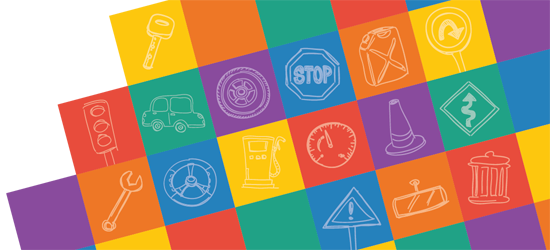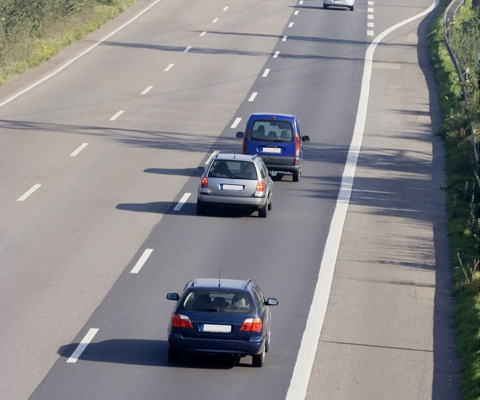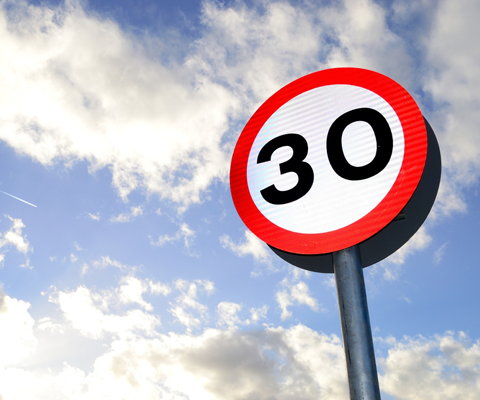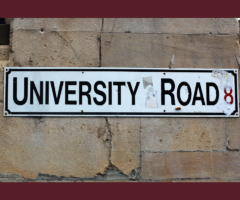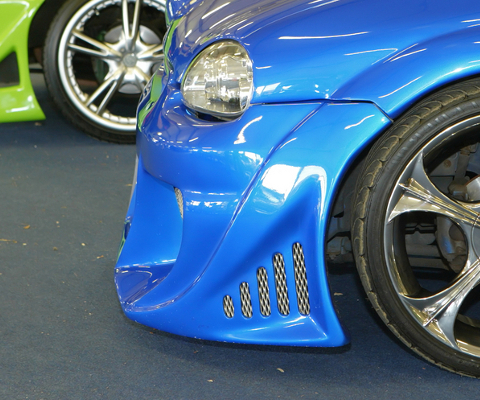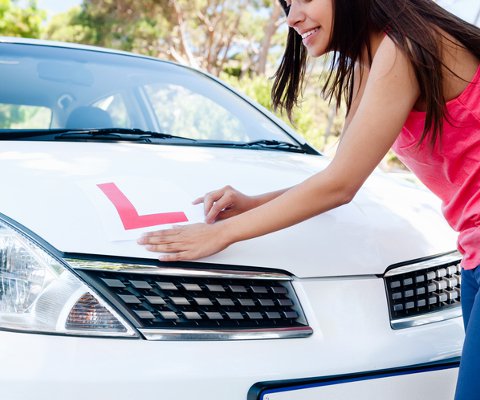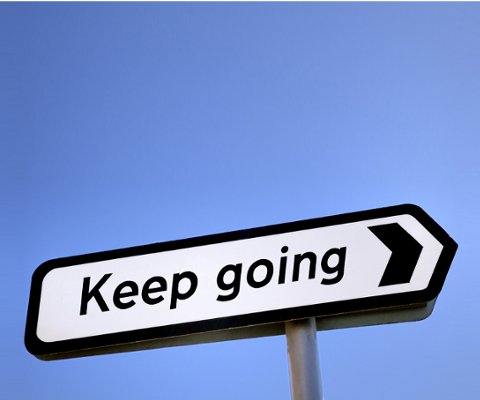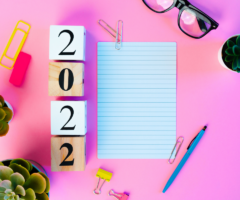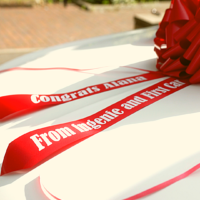
The complete driving test syllabus
Everything you need to know to pass your driving test
Your driving test will cover a bunch of stuff the Driver and Vehicle Standards Agency (DVSA) have identified as the MINIMUM you need to know to get on the road.
Driving isn’t only about these things - there’s a lot more you’ll have to learn by yourself after you pass. This driving syllabus is the place to start making sure you’re prepared.
What's in the driving syllabus?
The 5 stages of learning a driving skill:
- Skill introduced
- Skill carried out with direction
- Skill carried out when prompted
- Skill rarely needs to be prompted
- Skill carried out without any prompting
Once you’re at number 5 consistently in every skill, you’re ready to take your test.
The learning to drive syllabus
-
Cockpit drill
Probably the very first thing your instructor will talk to you about, before you’ve even driven a centimetre.
Your cockpit drill is everything you need to check before you drive - things like making sure your seat position is right and adjusting your mirrors. Basically: is everything cool for you to operate the controls safely and comfortably?
You won't need to go through the whole cockpit drill in your test if you've arrived at the test centre in your driving instructor’s car, because everything will be set up.
If you're doing your driving test in your own car, make sure you've been through the cockpit drill before arriving and you have a spare rearview mirror for the examiner. You won't fail if you don't have this but it makes a good impression.
DSSSM: doors, seat, steering, seatbelt and mirrors
Revise: how to move off in a car
-
Vehicle safety checks
Your first vehicle safety check(or 'tell me' question) will come up at the very start of your driving test. You’ll be asked to explain something.like when you’d use your fog lights).
From 4 December 2017, the second safety question ('show me') will happen while you're driving - like 'show me how you'd clean your windscreen'.
If you can’t answer both show me, tell me questions, you’ll get a minor. Not a great start.
As you can revise and practice these pre-test, you’re in complete control here. Acing this first part of your test will make you feel a lot better about the rest of it. It also makes a good first impression if you can deliver the answer to your first question confidently and in your own words - your instructor can help you with that.
-
Car controls and instruments
Knowing how to use the buttons and switches in the car is so important for safe driving. You never know when that sudden fog is going to start, or if you’ll need your hazard lights.
Some of these controls will come up in your show me, tell me questions, and it’s not unlikely you’ll need to use them as you’re driving around with your examiner, especially if you wake up to a rainy of foggy day.
At any point in the test, you can ask your examiner if it's OK for you to pull over to adjust, say, your mirrors. As long as you do it safely, with perfect observation, that's totally fine.
If you’re doing private practice in your own car, make sure you’re confident with all those controls too.
- Foot controls: accelerator, clutch, foot brake
- Hand controls: handbrake, steering wheel, indicators, gear stick
-
Moving off and stopping
- Mirror - use your mirrors to check the position of traffic around and behind you, acting on what you see
- Signal - show others what you intend to do, in good time
- Manoeuvre - a change in speed or position
- (Position - position your car correctly for the move you want to make, reinforcing your intentions
- Speed - adjust your speed so it’s safe for the manoeuvre
- Look) - have a final look to check it's safe before you start to steer
-
Safe road positioning
-
Use of car mirrors
- Before signalling
- Before changing direction or speed
- As part of the Mirror-Signal-Manoeuvre routine
-
Signalling
-
Anticipation and planning
- You can spot potential hazards so you're prepared to deal with them in plenty of time if they affect you
- You can anticipate what other drivers are potentially going to do and plan your actions around that
- You are aware of times or places that could cause hazards, like bus stops, schools and flooding areas
- You are aware and considerate of other road users like cyclists and pedestrians
-
Use of speed
You can be penalised in your test for going too fast AND too slow. If the speed limit is 50mph but it's a wet day, maybe 50 isn't the appropriate speed. If the speed limit's 30mph but you're going 20 - could be a problem because you're holding people up or the examiner thinks you have no idea what the limit is.
Speed is not only dictated by the official speed limit. The clue is in the name: it's a LIMIT not a target. Use your own judgment of the weather, the traffic and the road to settle on the appropriate speed.
You must always be able to stop in the distance you can see clear ahead of you. On a bendy road or at night, that's a much shorter distance.
As a careful driver, you may get tailgated. Make sure to maintain your safe distance from the car in front - slow down even more if you have to. You're in the right: they're breaking the law.
-
Other traffic
Sadly, we have to share the road with millions of people, all of whom have wildly varying levels of competence.
How you interact with these other drivers is a big factor in road safety. 'Driving defensively' means expecting the unexpected at all times: being able to use your anticipation and planning to judge what the people around you are going to do.
It's about safety but it's also about consideration for others. You can get up to 9 points on your licence for 'driving without due care and attention' or 'without reasonable consideration for other road users'. This could be something as small as driving through a puddle and splashing someone.
We all get cross on the road sometimes. Just try to remember there are people in those cars, so manners matter. You never know what kind of day someone else is having and driving calm will mean a much more relaxed day for you too.
-
Junctions
-
Roundabouts
-
Pedestrian crossings
- Pelican crossings - button for green man, red man
- Toucan crossings - for bikes and pedestrians
- Zebra crossings - slow down and be ready to stop when there are people waiting
- Puffin crossings - can sense when there are people crossing
- Pegasus crossings - have an extra (higher) button for people on horseback
-
Dual carriageways
Dual carriageways are the ones where there’s 2 (sometimes 3) lanes of traffic going each way. Important things you need to know about are speed limit and how to join and leave the carriageway.
This is the closest you’ll get to a motorway before you pass your test but as dual carriageways can be top speed (70mph), they can feel quite scary.
Getting to the point where you can get on and off, and judge your speed and overtaking by yourself is very important for being confident post-test.
Don’t forget: having a few post-test lessons to get to grips with motorway driving will help you face that last big fear!
Revise: speed limits
Manoeuvres
- Driving into a bay and reversing out or reversing in and driving out
- Parallel park
- Pulling up on the right-hand side of the road, reversing for 2 car lengths, then rejoining the road
-
Emergency stop or controlled stop
- Know how different road and weather conditions can affect the way you stop
- Can react quickly to the instruction without trying to guess when it's coming
- Can use the brake and clutch to bring the car to a controlled stop
- Can secure the car safely - handbrake, neutral
- Know how to move away safely from an emergency stop - all round observation as you'll be int he middle of the road
-
Adapting to road conditions
-
The Highway Code
-
Satnav use
Let's face it: nearly every new driver is going to use a satnav every now and then, which is why it's now part of your driving test.
Your parents may pride themselves on getting everywhere without one but they're probably following the same routes they were 20 years ago - and things have changed.
Planing the best route before you set off means you can drive undistracted, so a satnav is a brilliant tool. But you have to be able to use it safely.
What driving with a satnav means for your test:
- Your examiner will fix the satnav to the dashboard
- The route will be pre-loaded and the examiner will start it when your independent driving begins
- The satnav will give you vocal directions (you can ask for it to be muted but you'll probably find it easier to follow with the voice on)
- You'll drive with the satnav for about 20 minutes
- If you miss a direction, your examiner will help you get back on track
- You won't fail if you go wrong, as long as you're safe
It's a very good idea to get plenty of practice with a satnav before your test. Your driving instructor will help make sure you're prepared.
The basic car controls
You need to be able to use any of these controls instinctively, without having to look at them.
In your test, you’ll stop and move off again quite a few times. Each time, you must show the examiner that you’re doing the MSM(PSL) routine.
Mirror - Signal - Manoeuvre (Position - Speed - Look)
Revise: how to move off in a car - how to stop a car
Generally, you need to be able to keep a safe, central position in your lane. But positioning also means making good decisions to deal with upcoming hazards and showing your intentions.
Being aware of other drivers’ positioning is also really important: it can give you vital clues to what they're doing and keeps everyone safe.
Your use of your mirrors (and therefore your observation) is one of the biggest things your examiner will be looking out for.
Mastering 'Mirrors' also means being aware of the areas your mirrors don't let you see: your blind spots. Before you're ready to take your test, you'll need to be checking your mirrors regularly, checking your blind spots at the right time and acting on what you see.
You should be using your mirrors:
Revise: using car mirrors
Letting other people know what you're about to do keeps you and them safe by preventing any confusion. Even if you can't see anyone who needs your signal, there could be a driver or pedestrian you haven't seen.
It depends on the driving instructor, but mine told me to signal every time I stopped or moved off in my driving test, just in case.
It's good practice and it cements the action in your brain for when you're terrified in your test.
Revise: signalling
You have to become a bit of a fortune teller and a mind reader to be a good driver, which is something you'll get better at with time. Making an educated guess about what Mr BMW next to you is going to do even though he's not indicating. Spotting the excited kid on their new scooter. Noting that it's time for school to let out.
Always expect the unexpected. The number of times I've rounded a bend to find a tractor the size of a brachiosaurus in the middle of the road...
You'll need to show:
Revise: observation
Ooooh - the bit where you have to do loads of things at once. Probably the first big obstacle you'll face when you start driving, as it requires your brain, hands and eyes to work together. In seconds.
Then you're expected to turn right at a junction - ACROSS TRAFFIC!
Everything revolves around safety: not causing anyone to have to slow down, stop, swerve or swear.
At a roundabout you usually need to move to the left for exits left and straight ahead, and right for right exits. Getting the right position reinforces the action you’re going to take for other drivers using the roundabout.
You then need to be able to maintain that position all the way around the roundabout as if there were road markings (sometimes there are - helpful!). This is called lane discipline, and veering out of your - often imaginary - lane can be very dangerous.
Your signals on a roundabout are very important - you need to indicate if you're turning off left or right, and not at all if you're going straight over. Checking your mirror and then indicating that you're about to exit is very important too, to let people know you'll be changing direction and potentially speed.
One of the most important things you'll have to master to do well in your driving test is planning your move. Early observation will tell you if you need to just slow down or if you need to stop for cars approaching on your right.
It's very mean but you can quickly rack up minors if you stop at roundabouts when you don't need to, or even just for 'undue hestitation'.
Revise: understanding roundabouts
This is something that's easy to get wrong during your test because you're so focused on what YOU'RE doing and what other cars are doing, it's easy to miss what pedestrians are doing.
You'll need to know the rules for:
Number one thing to remember: if it's a choice between demonstrating a driving skill correctly and keeping a pedestrian safe, the pedestrian wins.
Revise: understanding pedestrian crossings - understanding hazards in built-up areas - understanding traffic lights
It’s no good hoping for the best when it comes to the manoeuvre you’ll get on test day. Take it from me (5 tests under my belt), it’s Sod’s Law you’ll get the one you hate!
Just dreading the manoeuvre will put you off your stride with the rest of the test, so do yourself a favour and get them ALL perfect before booking your test. It’ll be such a weight off your mind if you feel good about that bit.
The manoeuvres you could get in your test from 4 December 2017:
Take your time - as long as you’re doing all your observation, you can take your time. You’ll be more in control and able to do proper observation if you don't rush.
You have no idea how often you’ll need to use all these manoeuvres until you’re out on the road. If you can’t do them, you’re stuck - so use the time you have with a professional!
Revise: bay park - parallel park - pull up on the right
I think we all dread the emergency stop, don’t we? For a start, it’s acceptance of the fact that driving is blinking DANGEROUS.
It’s also something that requires you to be at tip-top alertness - and that’s hard when you’re freaking out that you have to do the emergency stop.
Hear this: I did 5 driving tests and never once did the emergency stop. Stop dreading it happening and just make sure you’ve practised it enough in lessons that it’ll be OK if it DOES happen.
You will need to show that you:
Revise: stopping a car
You need to be prepared to drive in any weather. This is one reason that getting plenty of private practice is important, but it's also a reason to not rush through your driving lessons: you really need to see more than one season with your driving instructor.
The more you drive on different roads, at different times and in different conditions, the more prepared you are for real-world driving. Trust me, you do not want the first time you drive in the dark to be when you've just passed and you're by yourself.
Being able to change your driving to what the road conditions demand is one of the most important parts of being a qualified driver. Your examiner will want to see that in your test, and it's vital for staying safe in all the years after.
Revise: driving in fog - driving at night - driving in floods
Having a sound knowledge of the Highway Code is essential. You should start learning it before you even start your driving lessons.
Think it won’t come up again after your theory test? AHAHAHAHA. It will, every time you have to decide who has right of way or where you can park. Your driving test examiner is going to expect you to know all the rules and so is that police car behind you.
The Highway Code is updated regularly so keep your knowledge up with the online version and always make sure you're not revising from an old book.
Know it, live it.
Check out our favourite theory test apps to keep your Highway Code knowledge fresh


